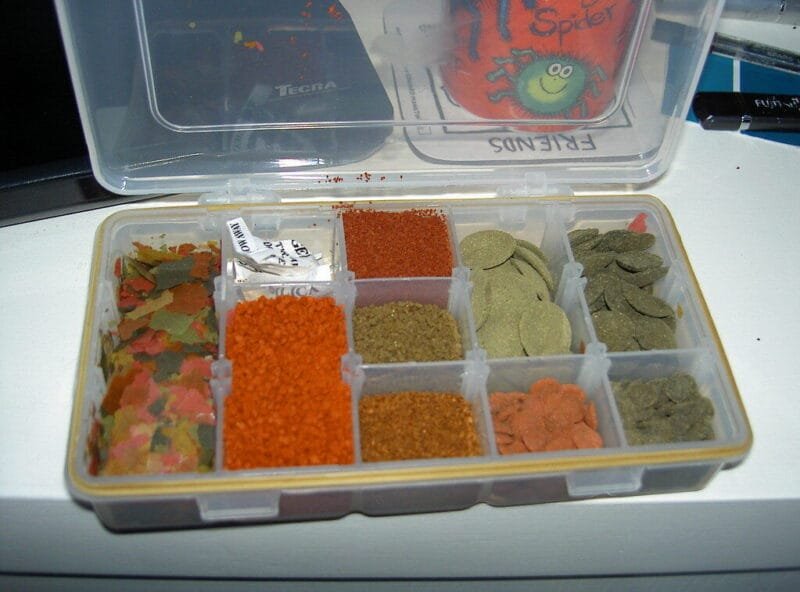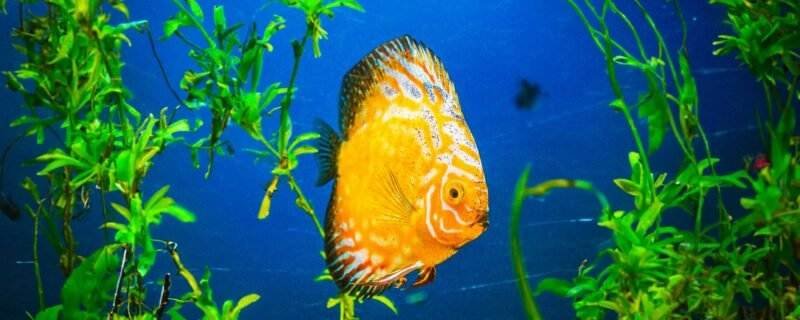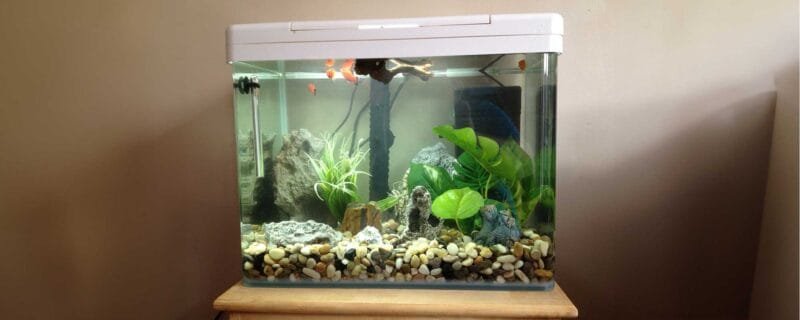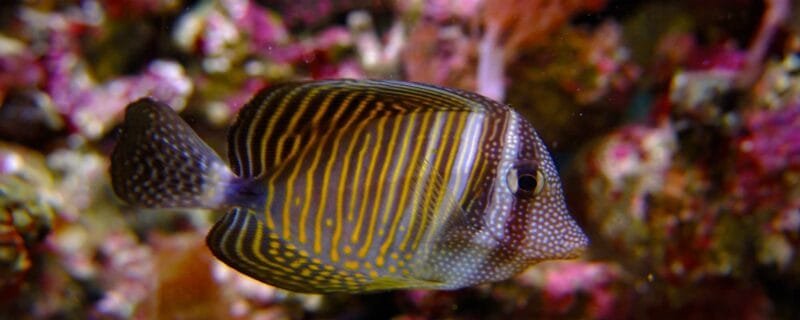This comprehensive guide will help you maintain a clean and healthy environment for your fish while ensuring your safety and the well-being of your aquatic pets. You’ll learn effective techniques to keep your tank pristine without using harsh chemicals that may harm your fish or plants. From understanding necessary cleaning tools to employing recommended practices, you’ll gain the knowledge to perform routine maintenance confidently. Dive into the steps that will transform your fish tank into a thriving underwater ecosystem.
Key Takeaways:
- Regular water changes and proper filtration are necessary for maintaining a healthy fish tank environment.
- Use aquarium-safe cleaning products and tools to avoid harming fish and plants.
- Maintain a consistent cleaning schedule to prevent algae buildup and ensure optimal water quality.
Types of Fish Tanks
Pertaining to choosing a fish tank, you have a variety of options to fit your needs and preferences. Understanding the differences can help you make an informed choice. Key types include:
| Freshwater Tanks | Ideal for beginners, easier to maintain, diverse fish options |
| Saltwater Tanks | More complex, stunning marine life, requires better equipment |
| Brackish Tanks | Mix of freshwater and saltwater, unique species |
| Rimless Tanks | Modern aesthetic, in-visibility of borders, enhanced viewing |
| Bowfront Tanks | Curved glass, larger viewing area, stylish design |
Recognizing the type of tank that suits your lifestyle and skill level can enhance your aquarium experience.
Freshwater Tanks
Freshwater tanks are perfect for beginners as they generally require less maintenance and are more forgiving with water parameters. With a wide variety of vibrant species ranging from goldfish to tetras, you can easily create a beautiful underwater habitat. They allow you to experiment with live plants and have lower equipment requirements, making them a popular choice for new aquarists.
Saltwater Tanks
Saltwater tanks offer a magnificent array of marine life, including clownfish and corals, but they come with increased complexity. The water chemistry is more delicate, requiring you to manage salinity levels and implement specialized filtration systems. The setup may demand a higher initial investment but can result in stunning displays of color and biodiversity if maintained properly.
Saltwater tanks also enable you to explore intricate ecosystems, where certain species rely on each other for survival. You can incorporate live rock and marine plants that create natural filtration, enhancing the habitat and aesthetics. Regular testing of pH, nitrate, and ammonia levels is crucial to prevent any fluctuations that could harm your delicate marine inhabitants. If you’re willing to learn and invest the time, a saltwater tank can become a captivating centerpiece in your home.
Essential Cleaning Tools and Supplies
To maintain a healthy aquarium, having the right cleaning tools and supplies is vital. You’ll need various items, from algae scrapers to water testing kits, to ensure your fish tank remains pristine and safe for your aquatic life. Investing in quality tools not only simplifies your cleaning routine, but also promotes a thriving environment for your fish.
Algae Scrapers
Algae scrapers are crucial for removing stubborn algae buildup from your tank’s glass or acrylic surfaces. These tools come in various forms, including magnetic scrapers, which allow you to clean without getting your hands wet, and traditional scrapers with long handles for those hard-to-reach areas. Regular use of an algae scraper helps maintain clear visibility and prevents your fish from suffering from oxygen depletion caused by excessive algae growth.
Water Testing Kits
Water testing kits are critical for monitoring the health of your aquarium. These kits typically measure pH, ammonia, nitrite, and nitrate levels, enabling you to understand your tank’s water quality. Keeping these parameters in check ensures that your fish thrive and are less susceptible to disease.
Investing in a high-quality water testing kit, such as those that use liquid reagents instead of strips, can provide more accurate results. For instance, regularly checking pH levels prevents stress in fish caused by rapid fluctuations. Testing for ammonia levels is equally important, as elevated amounts can be lethal to aquatic life. Aim to monitor your water quality at least once a week, especially in newly established tanks or after introducing new fish or plants.
Step-by-Step Cleaning Process
| Step | Description |
|---|---|
| 1. Preparing the Tank | Gather your cleaning supplies and remove ornaments, plants, and fish from the tank. |
| 2. Performing the Clean | Clean the inside of the tank and replace the water while maintaining the right conditions for your fish. |
Preparing the Tank
Before you start cleaning, gather all necessary supplies like a siphon, algae scraper, and water conditioner. Turn off any filters and heaters to avoid damage and stress to your fish. Carefully remove any decorations, plants, and fish; placing them in a separate container helps minimize their discomfort during the cleaning process.
Performing the Clean
Begin by using a siphon to remove debris and waste from the substrate, taking care not to vacuum too deeply to avoid disturbing beneficial bacteria. Clean the glass using an algae scraper, and rinse any decorations thoroughly in old tank water. Replace about 25% of the water with fresh, dechlorinated water, ensuring the new water temperature matches the tank to avoid shocking your fish.
A thorough clean involves monitoring and maintaining your tank’s ecosystem. For example, use a fine mesh net to carefully remove floating debris and minimize water disturbance. Always maintain a steady pH level and temperature when adding new water. After cleaning, observe your fish for any signs of stress; adjusting your maintenance routine can help ensure they thrive. Regular cleaning promotes a healthier environment, preventing buildup of harmful substances.
Tips for Maintaining Tank Health
Ensuring the long-term well-being of your aquarium involves several key practices. Focus on consistent water quality, appropriate temperatures, and regular feeding schedules. Additionally, monitor the health of your fish and plants to detect any potential issues early on. Here are some crucial tips:
- Perform regular water changes to avoid toxic buildup.
- Test water parameters weekly for pH, ammonia, nitrite, and nitrate levels.
- Maintain a consistent temperature suitable for your species.
- Feed your fish the appropriate diet and quantity to prevent overfeeding.
Recognizing warning signs early can help in maintaining a thriving ecosystem.
Regular Maintenance Schedule
Establishing a regular maintenance schedule is vital for your fish tank’s health. Aim for weekly water changes of 10-15% to keep your water parameters stable. Additionally, include filter cleaning every month and substrate vacuuming to remove debris. Keeping a log of these activities will help you stay on top of your tank’s needs.
Safe Cleaning Products
In the matter of cleaning your tank, choosing safe cleaning products is crucial. Avoid harsh chemicals that can harm your fish and plants. Instead, stick to natural or aquarium-safe cleaners. Vinegar, for example, is a great alternative for cleaning glass surfaces without leaving harmful residues.
Utilizing safe cleaning products not only protects your aquatic environment but also extends the lifespan of your tank. Various commercial products are designed specifically for aquariums and ensure you don’t compromise the delicate balance in your tank. Always read labels and opt for products labeled as ‘aquarium-safe’ to prevent any chemical contamination during your cleaning routine.
Factors Influencing Cleaning Frequency
The frequency of cleaning your fish tank depends on several key factors that can impact water quality and overall tank health. These include the size of the tank, the stocking levels of your fish, the type of filtration system you have, and how often you perform water changes. Regularly monitoring these individual components will help you determine the optimal cleaning routine for your aquarium. Assume that keeping a close eye on these factors will significantly enhance your fish’s environment.
Tank Size
The size of your fish tank plays a vital role in determining cleaning frequency. Larger tanks can support more stable water conditions, meaning they may require less frequent cleaning than smaller tanks. Generally, a larger volume of water dilutes waste products better, reducing the buildup of harmful toxins. Nevertheless, you should still perform regular maintenance to keep the ecosystem balanced.
Fish Stocking Levels
Your aquarium’s stocking levels directly influence water quality and cleaning needs. Higher fish populations create more waste, necessitating a more frequent cleaning schedule. If your tank is significantly overstocked, you may need to clean it weekly to counteract the dirty environment. Conversely, a lightly stocked tank might thrive on bi-weekly or even monthly cleanings. Maintain a balanced ratio of fish to tank size to reduce cleaning needs.
For example, a 20-gallon tank housing ten small fish might not require weekly cleanings, as they produce manageable waste. However, if you increase that number to twenty fish, the tank will quickly become uninhabitable without increased cleaning efforts. Keeping track of your stocking levels is important to ensure that your fish remain healthy and your aquarium ecosystem stays balanced.
Pros and Cons of Various Cleaning Methods
| Method | Pros and Cons |
|---|---|
| Chemical Cleaners | Pros: Quick results, effective against tough algae. Cons: Can harm fish if not used properly. |
| Natural Cleaning Alternatives | Pros: Safe for fish, environmentally friendly. Cons: May require more effort and time. |
| Mechanical Filters | Pros: Continuous filtration, reduce debris build-up. Cons: Regular maintenance required. |
| Manual Scrubbing | Pros: Direct control over cleaning, no chemicals. Cons: Time-consuming and labor-intensive. |
| Vacuuming | Pros: Targets substrate debris effectively. Cons: Can disturb established fish habitat. |
| Water Changes | Pros: Refreshes water quality, promotes fish health. Cons: Requires routine commitment. |
| UV Sterilizers | Pros: Controls harmful pathogens effectively. Cons: Can be expensive to operate. |
| Aeration Devices | Pros: Improve oxygen levels, reduce algae growth. Cons: Additional energy use required. |
| Ice and Salt | Pros: Natural algae control, easy to apply. Cons: Potential harm to sensitive species. |
| Plant-Based Cleaners | Pros: Non-toxic, boost aquarium ecosystem. Cons: Less immediate effectiveness compared to chemicals. |
Chemical Cleaners
Chemical cleaners are favored for their quick and effective solutions against stubborn algae and build-up. However, you must handle these products with care, as misuse can be harmful to fish and other aquatic life in your tank. Always follow manufacturer instructions and ensure your fish are adequately protected before use.
Natural Cleaning Alternatives
Natural cleaning alternatives, such as vinegar or baking soda, are excellent for keeping your tank safe from chemicals. These methods are environmentally friendly and gentle on your fish. While they may require more effort, the long-term benefits include a healthier tank ecosystem.
Natural cleaning methods often involve ingredients readily available at home, like vinegar for descaling surfaces or baking soda for deodorizing. Not only do these options reduce the risk of chemical exposure for your fish, but they also help to maintain a balanced aquatic environment. Utilizing these alternatives can significantly enhance the well-being of your tank, although the effectiveness may not match that of chemical products. Regular use of natural methods can contribute to a cleaner tank over time with consistent maintenance.
Final Words
Following this guide, you will be well-equipped to maintain a clean and healthy environment for your fish. Prioritize regular maintenance routines and use safe cleaning methods to avoid harming your aquatic life. By choosing the right tools and products, you can enhance the beauty of your tank while promoting the well-being of your fish. Your diligence in maintaining cleanliness will not only extend the life of your aquarium but also contribute to a vibrant and thriving underwater ecosystem.
FAQ
Q: How often should I clean my fish tank?
A: It’s recommended to perform partial water changes and clean substrate every 1-2 weeks. Full tank cleanings, including decorations and equipment, can be done every 4-6 weeks, depending on tank size and fish load.
Q: What cleaning supplies are safe for my fish tank?
A: Use aquarium-safe products like algae scrapers, siphons, and microfiber cloths. Avoid soaps, detergents, and chemical cleaners. Rinse any new equipment with aquarium water before using it in the tank.
Q: How can I safely remove algae without harming my fish?
A: Use an algae scraper or a magnetic cleaner for glass tanks. For tougher algae, consider adding algae-eating fish or snails, and maintain proper lighting and tank balance to prevent excessive growth.






